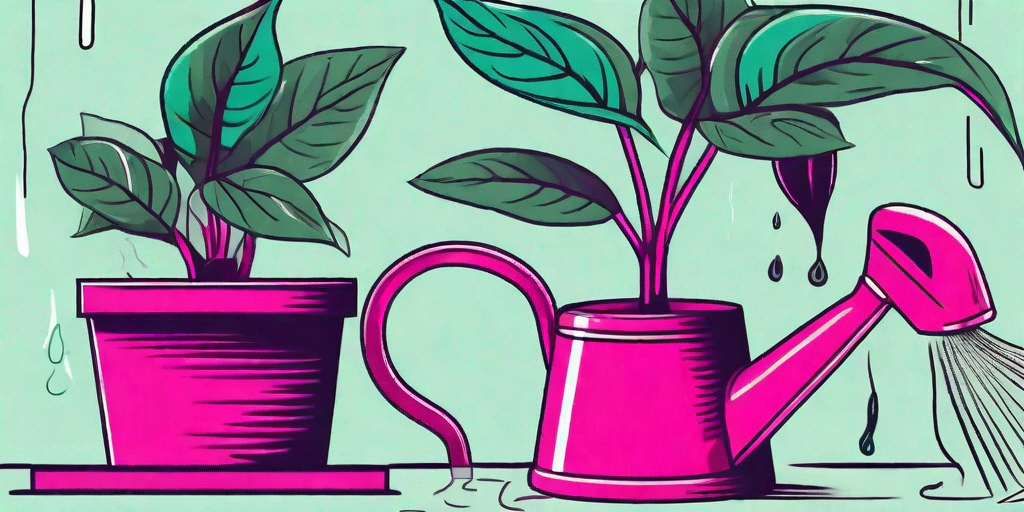
Fuchsia, the belle of the garden ball, is known for its vibrant colors and delicate, drooping flowers. But like any diva, it can be a bit high maintenance. If you've found yourself pulling your hair out over your fuchsia's fussiness, don't despair. We're here to help you troubleshoot your plant problems and get your fuchsia back to its fabulous self.
Understanding Your Fuchsia
Before we dive into the nitty-gritty of fuchsia frustrations, let's take a moment to understand this plant. Fuchsia is a genus of flowering plants that boasts about 110 species, all of which are known for their stunning, pendulous flowers. They're a bit like the chandeliers of the plant world, if chandeliers could photosynthesize.
Native to Central and South America, as well as New Zealand and Tahiti, fuchsias prefer a cool, moist environment. They're not big fans of extreme heat or cold, which can make them a bit tricky to grow in certain climates. But with a bit of care and attention, they can thrive in a variety of settings.
Common Fuchsia Frustrations
Now, let's get down to business. What are some of the most common problems that fuchsia enthusiasts encounter? And more importantly, how can you overcome them?
Problem 1: Drooping and Wilting
One of the most common issues that fuchsia owners face is drooping or wilting plants. This can be caused by a variety of factors, including overwatering, underwatering, or a lack of sufficient nutrients.
Overwatering is a common issue, especially for eager new plant owners who want to give their fuchsia all the love and attention they can muster. But like a clingy partner, too much attention can be a bad thing. Overwatering can lead to root rot, which can cause your plant to wilt and eventually die.
Problem 2: Fading Colors
Another common issue is fading colors. Fuchsias are known for their vibrant hues, so it can be disheartening to see your plant's colors fade. This can be caused by too much sunlight, as fuchsias prefer indirect light. It can also be a sign of nutrient deficiency, particularly a lack of iron.
To combat this issue, try moving your fuchsia to a shadier spot and supplementing its diet with a high-quality plant fertilizer. A little TLC can go a long way towards restoring your plant's vibrant colors.
How to Overcome Fuchsia Frustrations
Now that we've identified some common fuchsia frustrations, let's talk about how to overcome them. Here are some tips and tricks to help your fuchsia thrive.
Tip 1: Water Wisely
As we've mentioned, overwatering is a common issue for fuchsias. But how much water is too much? A good rule of thumb is to water your fuchsia when the top inch of soil feels dry to the touch. Be sure to water thoroughly, so that water runs out the bottom of the pot, but avoid letting the plant sit in standing water.
Underwatering can also be an issue, especially in hot, dry climates. If your fuchsia's leaves are wilting or turning brown, it may be thirsty. Try increasing the frequency of your watering, but be careful not to overdo it.
Tip 2: Feed Your Fuchsia
Fuchsias are hungry plants, and they require a steady supply of nutrients to produce their stunning flowers. A high-quality plant fertilizer can help provide these nutrients. Look for a fertilizer that contains a balanced ratio of nitrogen, phosphorus, and potassium, as well as trace elements like iron.
Feed your fuchsia every two weeks during the growing season, and reduce feeding to once a month during the winter months. Remember, a well-fed fuchsia is a happy fuchsia!
Frequently Asked Questions
Now, let's tackle some of the most frequently asked questions about fuchsia care.
Question 1: Can I grow fuchsia indoors?
Absolutely! Fuchsias can make excellent houseplants, as long as they're given the right conditions. They prefer indirect light, so a north or east-facing window is ideal. Just be sure to keep them away from drafts and heating vents, as they prefer a cool, stable environment.
Question 2: Why are my fuchsia's leaves turning yellow?
Yellow leaves can be a sign of several issues, including overwatering, underwatering, or a nutrient deficiency. Check the soil moisture levels and consider adjusting your watering schedule or feeding your plant a balanced fertilizer.
Conclusion
While fuchsia can be a bit finicky, with a bit of care and attention, you can overcome common fuchsia frustrations and enjoy the stunning beauty of this plant. Remember, every plant is unique, and what works for one fuchsia may not work for another. Don't be afraid to experiment and find what works best for your plant. Happy gardening!















